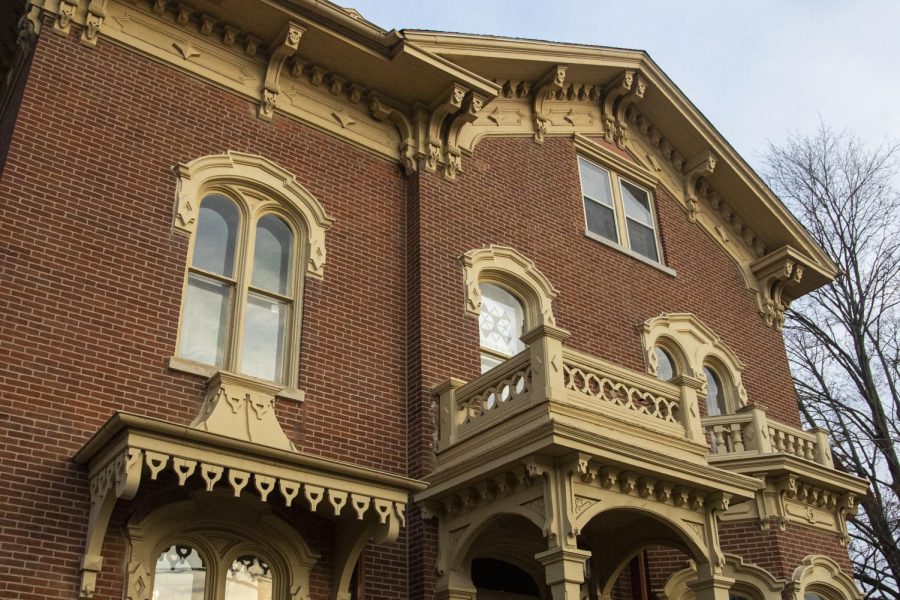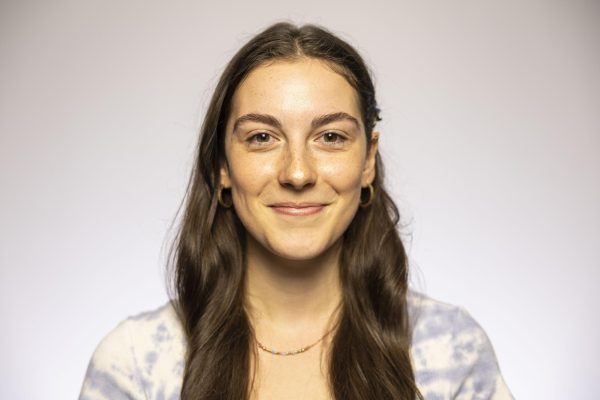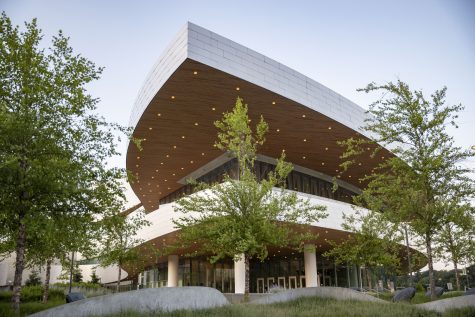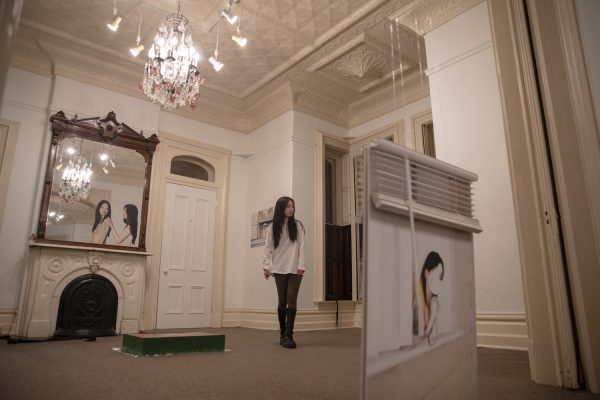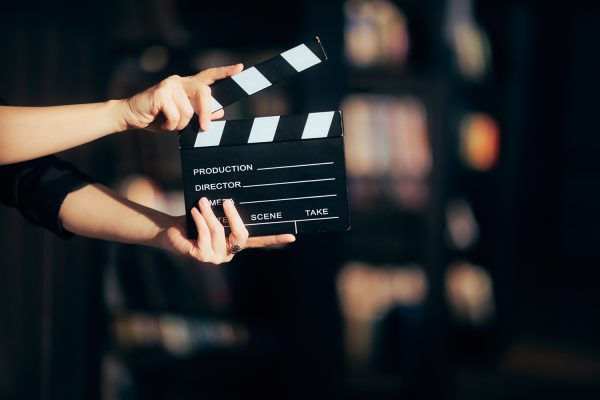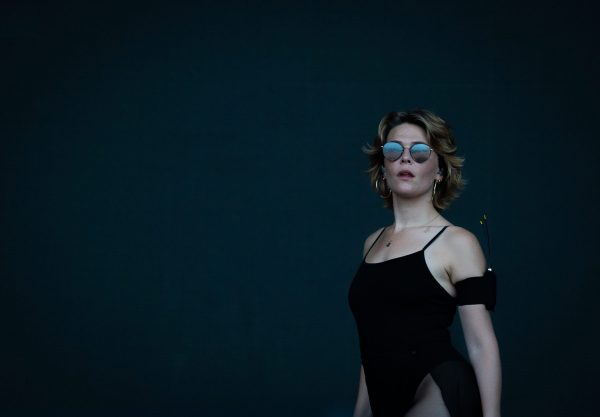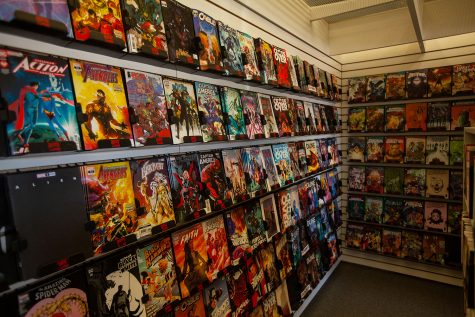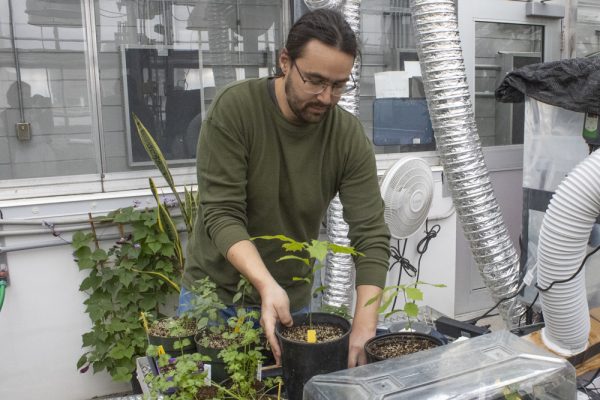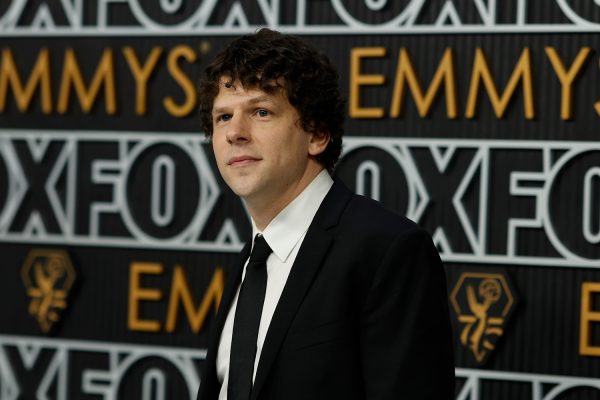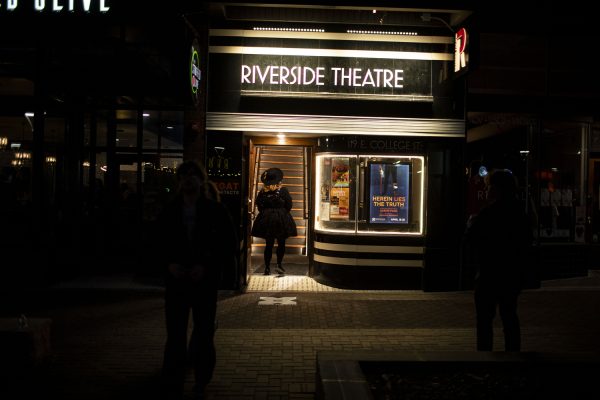Center for Afrofuturist Studies continues to bring in artists of color with open call for next year residencies
Iowa City’s Center for Afrofuturist Studies has sent out an open call for 2023-2024 artist residencies, continuing to provide artists of color with space and resources to work.
Public Space One is seen in Iowa City on Tuesday, Nov. 15, 2022. The third floor of house is home to the Center for Afrofuturism Center – an apartment that houses and supports artists of color.
November 15, 2022
On the first floor of Public Space One’s Close House is a small room filled with artwork and book-lined shelves. Warm sunlight streaming in through the windows overlooking Gilbert Street illuminates the Reading Room of Iowa City’s Center for Afrofuturist Studies.
The center, located at 538 S. Gilbert St., is an artist residency program that provides workspaces for artists of color to work toward equitable futures.
Transgender poet and artist Anaïs Duplan founded the program in 2016. Duplan was in Iowa City attending the Iowa Writers’ Workshop when he reached out to PS1 about an idea for a space that provides artists of color with community access.
Duplan has made connections with multiple artists during his time in Iowa City, some of which he refers to the program. At other times, the center will send out an open call to artists of color. An interested artist will be vetted based on a certain standard of criteria and then meet with PS1 to discuss their residency needs.
The Close House’s Reading Room acts as a home base where PS1 members and the center’s artists in residence can engage with Afrofuturist works by artists of color or do research for their own projects. It was installed when PS1 bought the Close House last year.
The Close House also contains a third-floor apartment space used by artists for their residency. Ryan Kuo, who finished his residency with the program this month, lived in the apartment during his time in Iowa City.
Kuo spent his residency working on a project called “File: A User’s Manual,” which is an artist book that is part of a larger process work called “File.”
Kuo described the book as “simple, abstract diagrams about the ways that different bodies relate and fail to relate to each other.” For the book, he takes the rhetorical perspective of whiteness to analyze the relationships between white people and people of color.
As an artist and a person who has experience working with technology, most of Kuo’s work is created and displayed on screens. For example, “File” is an interactive artwork that can only be accessed online in the form of a Keynote animation.
During his time at the center, Kuo’s residency helped him make progress on his project and find time to focus on himself.
“My second day here, when I was sort of already knee-deep in reading and I was really enjoying myself, just being in the apartment and reading. And that made me realize that I was actually quite happy and feeling together with myself, and it’s because of the space that they created,” Kuo said.
The center’s residents recognize every artist is in a different phase of their work and their life, which is why not every residency experience will be the same.
While one artist might spend their time finalizing a larger work, another might brainstorm ideas for a new project.
“Our residency is fairly unique because it’s not meant to be a cookie-cutter sort of thing, so there’s not one recipe for every residency,” Executive Director of PS1 John Engelbrecht said.
As well as providing artists with space and time to work or relax, PS1 helps artists create connections within the local community and beyond. Engelbrecht said these connections tend to be formed between artists and youth-based groups like G! World, a mentoring group for girls of color between 12-18 years old.
PS1 encourages every artist to hold at least one public event during their residency to facilitate these connections. Kuo gained publicity by visiting Grinnell College and speaking to students about video art.
RELATED: Center for Afrofuturist Studies strives to uplift Black voices across various platforms
“It’s really special to be able to have a local community to be able to interact with [the artists] in person, at least sometimes when that’s possible, and to learn more about their work in a more direct way than you would just by looking at their website,” PS1 Program Director Kalmia Strong said.
PS1 funds travel and provides a stipend for artists so they don’t have to worry about money during their residency.
Today, the center is one of PS1’s biggest programs, and the two directly impact each other.
Engelbrecht said after founding the program, Duplan insisted on keeping it central to Iowa City instead of bringing it back to New York where he began a fellowship with the Museum of Modern Art and the Studio Museum in Harlem.
A program like the Center for Afrofuturist Studies was more unexpected in Iowa City than in New York, which drew more attention to it in a predominantly white space, Engelbrecht said.
The Center for Afrofuturist Studies is constantly expanding and reaching around the country by bringing in artists from across the U.S. like movement artist Jonathan González, who just arrived at Close House for his residency on Nov. 8.
The center also received a $2,500 grant from the USA Today Network this year that will help fund their residencies.
Engelbrecht said the center has a larger reputation than PS1 itself because of the work it’s been doing and the presence it has beyond Iowa City.
“I think it also is something that Iowa City can point to and be proud of, that there is this forward-looking organization that is really wanting the lives of people of color to be valued equally,” Engelbrecht said.
The artists in residence focus on work revolving around racial and social justice. Giving them visibility is the beginning of equitable Afrofuturism — an idea that is slowly taking root in Iowa City.
“That’s a hard stone to lift and move because of systems and histories that are all intertwined, but there is a presence and there is a space, and so I think in some ways the idea itself is really potent,” Engelbrecht said.



